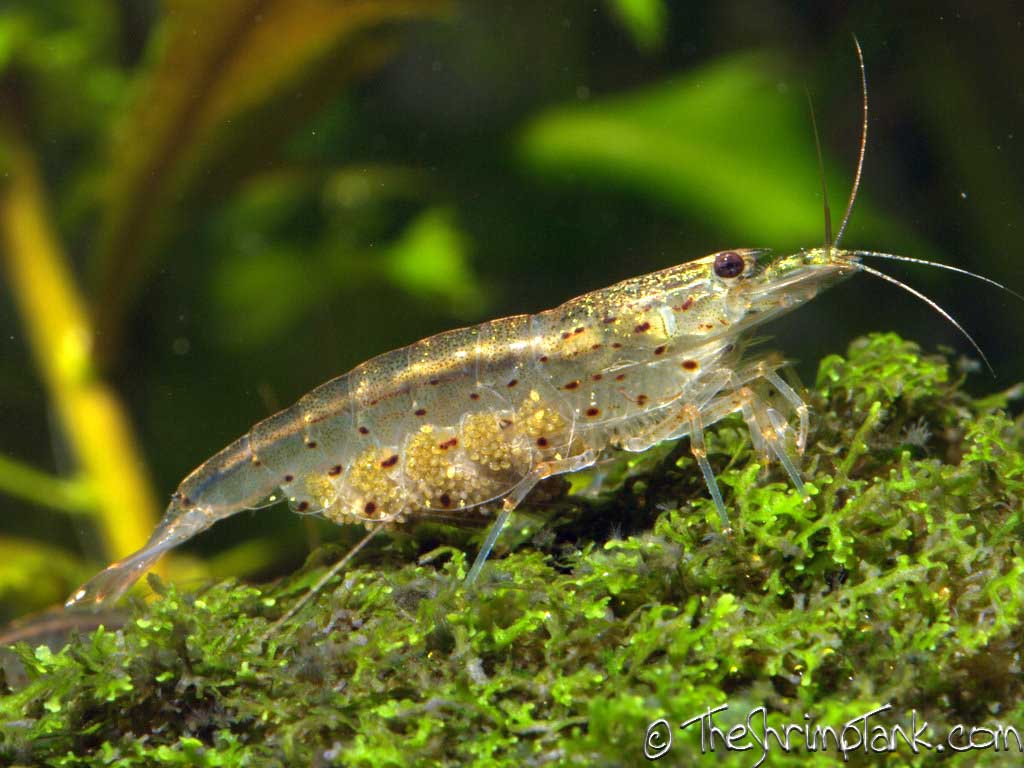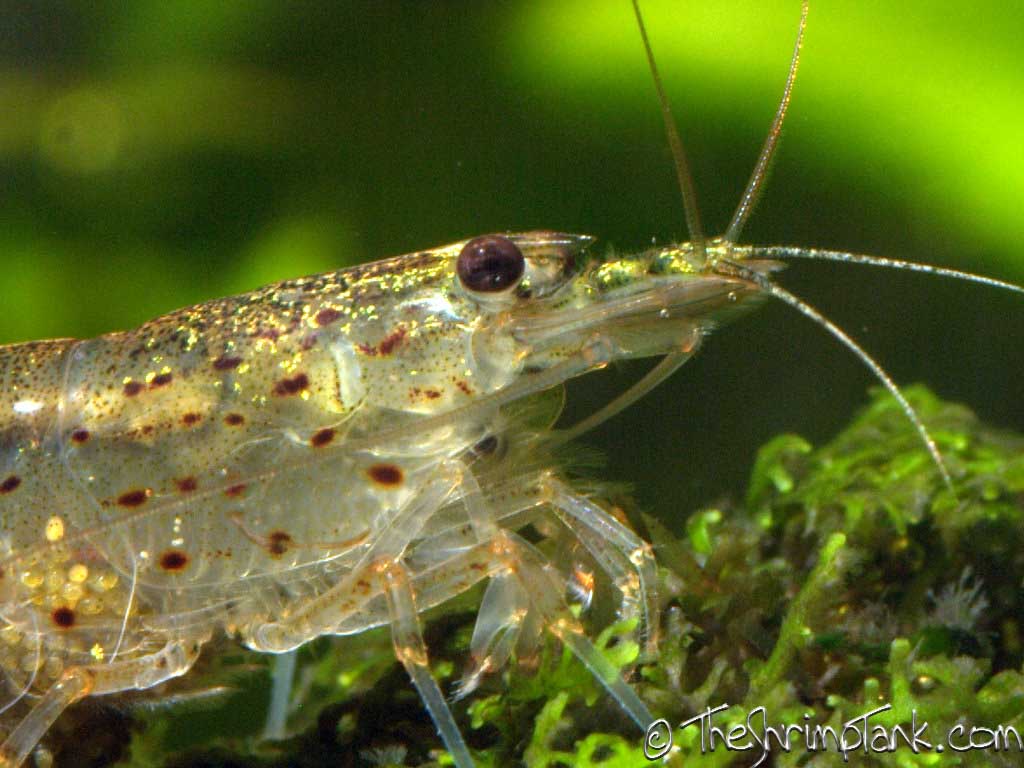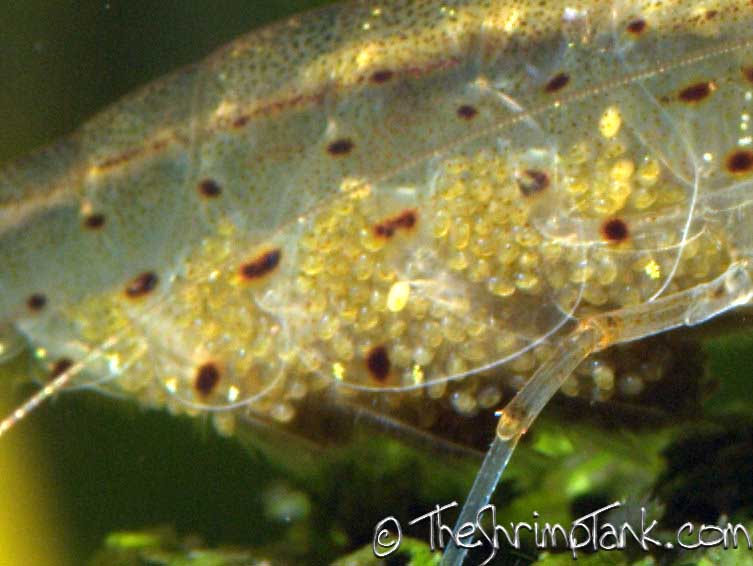Amano Shrimp
| Common Name | Amano Shrimp |
| Scientific Name | Caridina Multidentata |
| Adult Size | 4.0-5.0 CM or 1.5-2.0 inches |
| Water Temp | 15°-30° C or 60°-85° F |
| pH Range | 6.5-8.0 |
| Water Hardness | Soft-Hard |
| Fresh or Salt Water | Freshwater |
| Larval Stage | Larval stage that requires brackish to full seawater. |
| Difficulty | Easy |
| Egg/Saddle Color | Light yellowish |
| Behavior | Non-aggressive? See below |
General Information
Amano Shrimp are the dwarf shrimp that started it all. They were made famous by Takashi Amano when he started using them in his planted tanks for algae control. Amano shrimp are the best algae eating dwarf shrimp available. Amanos also get larger then other dwarf shrimp making them an excellent choice for tanks with fish that may eat smaller shrimp species.
Amano Shrimp are voracious eaters and will attack any food you add to the tank. I have even seen them swim up to the top of the tank, flip upside down, and grab flakes off the surface of the water. They also enjoy grabbing up food and running away with it to eat it where other shrimp will not be able to steal it from them.
Amano Shrimp are stronger then most other dwarf shrimp and are capable of moving around when they are out of the water (not very well though). They will sometimes wonder out of the tank and across your floor so be aware of this. If possible I suggest having a top on the tank or leaving the water level a little lower to make it more difficult for them to climb out. Of the 50 or so I put into my 120p ADA tank, I have lost maybe one a month when it decided to go exploring.
Some people believe that Amanos do not make good tankmates with other dwarf shrimp. They claim Amano Shrimp may prey on the young of other dwarf shrimp. I have not noticed this behavior and I don't not know anyone who has actually seen it occur. I have both Amano Shrimp and Wild Type Neocaridina Shrimp in a tank together, and have not noticed this behavior.
Appearance
Amano Shrimp are not very colorful. They are usually a clearish tank color. They also have spots running down their sides.
Breeding
Unfortunately Amano Shrimp are not easy to breed, and only a few people have taken the time to try and breed them. The larva apparently requires full strength saltwater within a few days of hatching. The newborn larva feed on plankton and other small particulates in the water. As they grow they can be fed larger food. A good guide I found on breeding them can be found here.
There are no products listed under this category.




